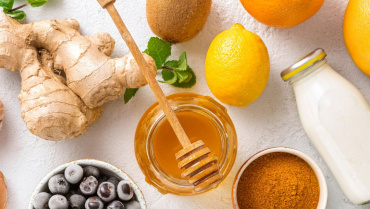Having the knowledge to read food labels with confidence is a great tool, giving you control over which foods or ingredients you feed your body and which ones you steer clear of. It can keep you on track with your overall health goals. However, sometimes reading labels is stressful, confusing, and overwhelming as some companies are misleading or manipulate facts for marketing purposes. Once you get the hang of it, though, reading labels will be second nature, as you quickly scan the back of a package and know right away if you want it.
In this two-part series, we’ll first look at how to interpret the ingredients list and what to avoid, as well as understanding those all-important carb numbers. In Part 2, we’ll cover everything you need to know about sugar and sugar alcohols in foods.
Here are your must-know guidelines to follow when looking at the nutrition facts on the back of a packaged food.
It’s essential to look at the ingredient list first before you get caught up in the numbers game. If the ingredients don’t make the grade, then there’s no point in continuing. Remember that the ingredients list is ordered from largest to smallest amount used to make the product.
Watch for additives, preservatives, and chemicals and try to choose organic whenever possible.
AVOID:
- MSG
- Artificial food colorings (can cause allergic reactions, thyroid issues, ADHD, etc.)
- Sodium Nitrate (preservative in processed meats that increase the risk of cancer)
- Artificial sweeteners (can cause digestive distress and headaches)
- Sodium Benzoate
- Artificial Flavorings
- BHA and BHT
- Olestra
- Potassium Bromate
- Partially hydrogenated oils
The ingredient list is particularly important for those with food allergies and sensitivities. There are 8 common food allergens, including eggs, milk, peanut, tree nuts, fish, shellfish, wheat (gluten), and soy.
Common food allergens to avoid may be listed on food labels as:
- Eggs: albumi, ovalbumin, mayonnaise, lysozyme.
- Milk: casein, galactose, lactate, hydrolysate, whey.
- Peanut: arachic oil, beer nuts, earth nuts, hydrolyzed peanut protein.
- Tree nuts: Artificial flavoring, nut butters, nutmeat, nut oil.
- Fish: fish meal, fish sauce, surimi, fish oil.
- Shellfish: barnacle, fish stock, surimi, seafood flavoring.
- Wheat (gluten): dextrin, maltodextrin, modified food starch, textured vegetable protein, spelt, semolina, emmer.
- Soy: Bean curd, edamame, hydrolyzed soy protein, miso, natto, okara, soybeans, soy lecithin, tamari, tofu.
Remember to check the serving size. This way, you’ll immediately know if you need to multiply all the numbers to reflect how big of a serving you’ll actually be having.
What You Need to Know About Carbs
Carbohydrates are listed as “total carbohydrates” on a food label. There will be a total number next to this and then two subcategories (sugar and fiber). It is broken down this way so you can calculate “net carbs.”
How to Calculate Net Carbs
Net carbs are the carbohydrates your body utilizes for energy. Since your body does not break down and use fiber, net carbs (energy) are determined by subtracting the fiber from the carbohydrates to get your net carbs.
Carbohydrates – Fiber = Net Carbs
Figuring out how many carbohydrates you want to consume will depend on what type of nutrition plan you’re on, as well as the quality of the food you’re eating (processed vs. whole food).
Americans do not consume enough fiber daily. It is estimated that back in our “hunter-gatherer” times, our ancestors consumed around 100-150 grams of fiber a day. Today we consume only 8-15 grams a day. That is a fantastic difference!
Fiber is vital to your diet because it slows down the rate food enters your bloodstream and speeds up the rate it exits your body, creating stable blood sugar and cholesterol levels. This could help explain the increase in diabetes and heart disease in our world today. Checking the fiber content on a food label will help you try to increase that number and reach higher goals.
Shoot for 25-35g of fiber a day, at least.
As always, quality over quantity. The quality of your food matters so much these days. Avoiding foods with packages and labels is ideal but not realistic. Taking a moment to read the label will help you understand what you’re putting in your body and give you ultimate control over your nutrition.
Read Part 2 of this series, where we’ll look at what you need to know about sugar and sugar alcohols.





Add Comment